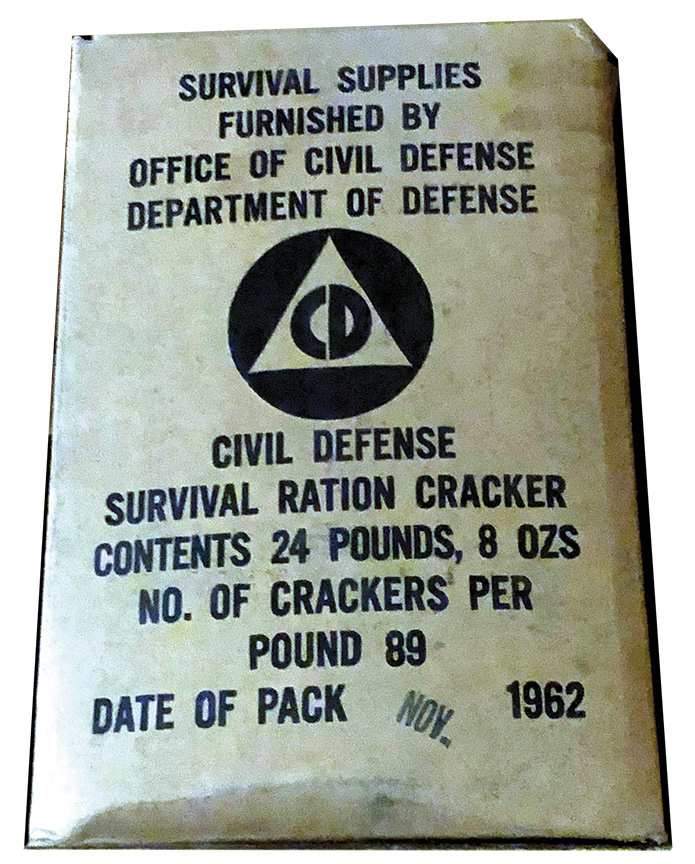
Dorri Partain
Northeast News
In the event of a nuclear attack on American soil, can citizens survive on a diet of whole wheat crackers, hard candy, and water?
Following the end of World War II, the possibility of such lead a succession of presidents to enact measures to ensure the safety and survival of citizens, with Truman’s Federal Civil Defense Administration program in 1951.
While the Eisenhower administration focused on the evacuation of large cities and military deployment by creating the National System of Interstate and Defense Highways in 1956, President Kennedy revamped Truman’s program, creating the Office of Civil Defense in 1961.
Even though citizens were encouraged to construct their own underground or basement shelter to protect from nuclear fallout, the National Fallout Shelter Survey and Marking Program sought public buildings that could be converted to emergency shelters.
Banks, schools, churches, office buildings — any building with a concrete basement — was assessed for access, density, and capacity.
Once approved, the building was marked with exterior and interior signs; as designed by Army Corp of Engineers official Robert Blakely, the design was highly visible and reflective in the event of a night-time attack.
Shelters were stocked with survival supplies to last an approximate two-week stay that were easy to distribute and provide each shelter occupant with 700 calories a day and included sanitation and medical kits.
During the two-week period, occupants were allotted 3.5 gallons of drinking water, six “survival biscuits” served daily, and lemon and cherry flavored candies referred to as “carbohydrate supplements.”
Baked locally by Sunshine Biscuit, the biscuits were wrapped in wax paper, then sealed into metal canisters holding 434 crackers, with two canisters per box.
Twenty billion crackers were produced when the shelter-stocking program ended in 1964, with 95,797 marked shelters to accommodate 93 million people.
Many of the unused supplies were exported by CARE International to provide famine relief to residents of Chad and Niger in the 1970s.
In 1978, the biscuits were recalled due to age, but stockpiles can still be found tucked away, even today.
















